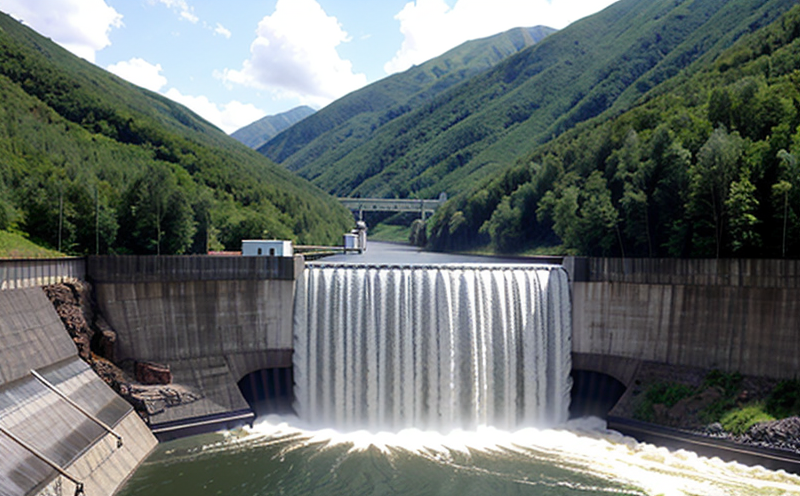EN 1992 Concrete Structure Testing of Hydropower Dams
The European Standard EN 1992-1.1:2004 is a key document for the design and assessment of concrete structures, including those used in hydropower dams. This standard provides detailed guidelines on the structural behavior under static loads, fatigue, and environmental loading conditions. For hydropower dam testing specifically, EN 1992-1.1 ensures that all components are designed to withstand the extreme forces generated during operation.
Hydropower systems typically operate in harsh environments where concrete structures must endure high water pressures, temperature variations, and mechanical stresses due to moving parts like turbines and penstocks. Accurate testing is crucial for ensuring structural integrity over long periods of service life. The standard covers various tests such as material characterization, fatigue testing, creep behavior, and static strength evaluations.
Material selection plays a critical role in the performance of these structures. Concrete mixes need to be carefully chosen based on factors like compressive strength, durability, resistance to abrasion, and chemical attack by water. Specimen preparation involves creating representative samples that mimic full-scale conditions as closely as possible. This includes curing specimens under controlled environmental conditions before testing.
Instrumentation used in these tests can range from simple load cells measuring force applied at specific points on the structure to advanced strain gauges embedded within the concrete matrix itself. Advanced finite element analysis (FEA) software simulates how different loading scenarios affect the structure, providing insights into potential weaknesses or areas requiring reinforcement.
Compliance with EN 1992-1.1 is essential for ensuring safety and reliability of hydropower facilities, which are vital sources of renewable energy. By adhering to this standard during design phases through rigorous testing procedures outlined herein, engineers can build structures capable of operating efficiently while minimizing risks associated with failures.
Some key aspects of EN 1992-1.1 include:
- Structural safety assessment
- Material properties determination
- Environmental exposure tests
- Fatigue life prediction
- Static load testing
These elements ensure that hydropower dams meet strict quality standards set forth by international bodies like CEN (European Committee for Standardization). Adherence to such regulations helps maintain public trust in large-scale infrastructure projects and supports sustainable development goals.
Why It Matters
The integrity of concrete structures underpinning hydropower systems is paramount given their critical role in renewable energy generation. Any failure could lead to catastrophic consequences, including loss of life, damage to surrounding ecosystems, and significant financial losses for operators. Ensuring compliance with EN 1992-1.1 not only enhances safety but also contributes positively towards sustainable practices by promoting longevity and reducing maintenance costs over time.
From an operational perspective, regular monitoring and testing according to this standard help identify early signs of deterioration or wear, allowing for timely interventions before issues escalate into larger problems requiring extensive repairs or replacements. This proactive approach saves resources and ensures continuous availability of power from hydropower plants.
In terms of regulatory compliance, following EN 1992-1.1 helps facilities avoid costly penalties associated with non-conformance to international standards. Additionally, it positions organizations favorably among stakeholders who value transparency and reliability in their supply chains.
Customer Impact and Satisfaction
Customers benefit significantly from thorough testing conducted according to EN 1992-1.1 because they receive reliable products that meet high safety standards. This increases customer confidence in both the product itself as well as the company offering it, fostering long-term relationships based on trust.
For end-users of hydropower systems, knowing that rigorous testing has been performed reassures them about the quality and performance of these crucial assets. It also enhances brand reputation among stakeholders involved in project financing or supply chain management.
Moreover, compliance with this standard demonstrates a commitment to excellence, setting benchmarks for industry best practices which can elevate overall standards across sectors.





